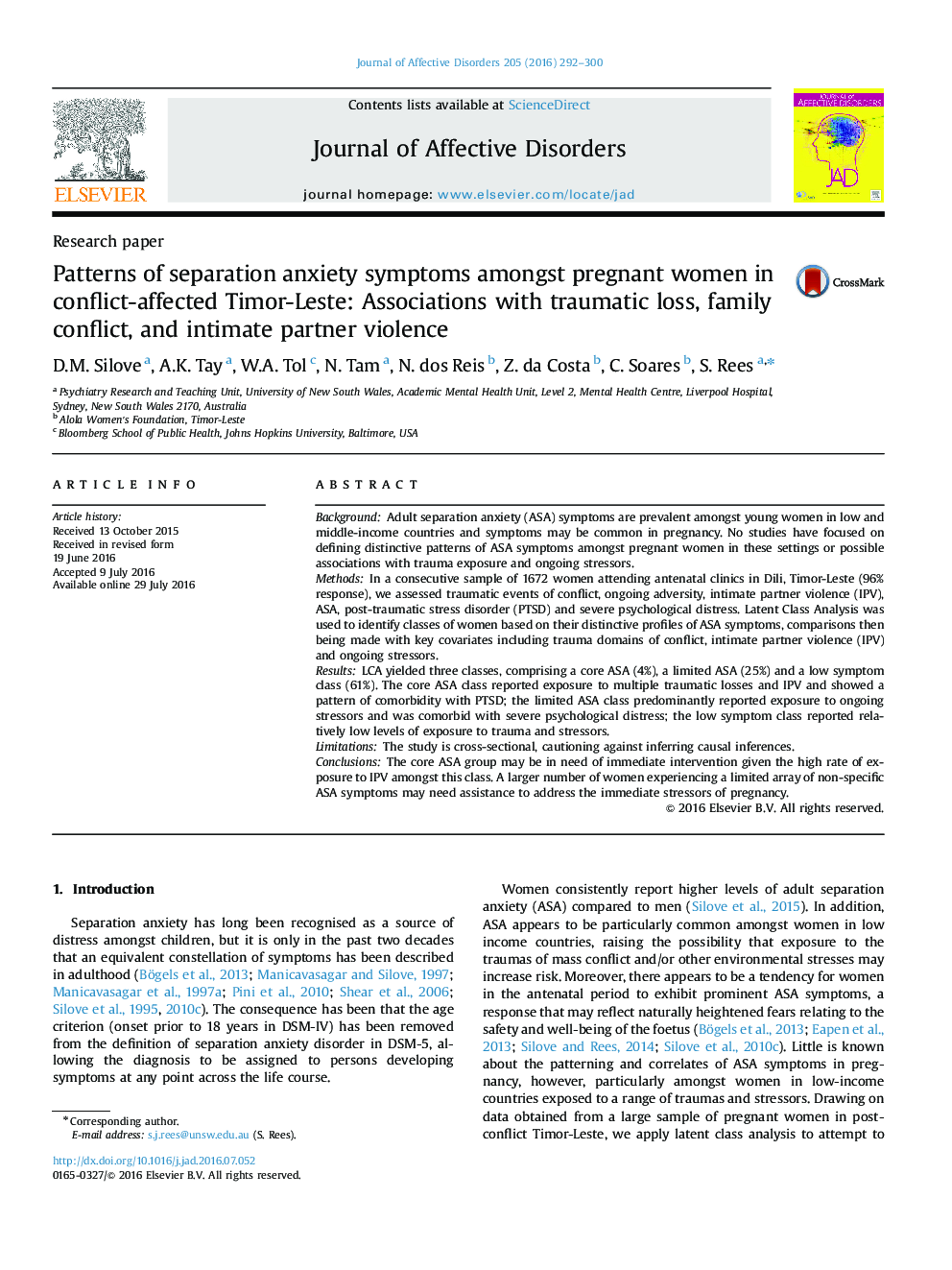| کد مقاله | کد نشریه | سال انتشار | مقاله انگلیسی | نسخه تمام متن |
|---|---|---|---|---|
| 6229707 | 1608120 | 2016 | 9 صفحه PDF | دانلود رایگان |
- Adult separation anxiety disorder (SAD) may be common in the antenatal period.
- Examination of a dual typology of SAD in pregnant mothers in a conflict-affected country.
- Extensive SAD symptoms associated with traumatic losses and intimate partner violence.
- Pregnant women in the limited SAD class experienced health and conflict-related stresses.
- Provides insights into SAD symptoms and correlates in pregnancy in post-conflict setting.
BackgroundAdult separation anxiety (ASA) symptoms are prevalent amongst young women in low and middle-income countries and symptoms may be common in pregnancy. No studies have focused on defining distinctive patterns of ASA symptoms amongst pregnant women in these settings or possible associations with trauma exposure and ongoing stressors.MethodsIn a consecutive sample of 1672 women attending antenatal clinics in Dili, Timor-Leste (96% response), we assessed traumatic events of conflict, ongoing adversity, intimate partner violence (IPV), ASA, post-traumatic stress disorder (PTSD) and severe psychological distress. Latent Class Analysis was used to identify classes of women based on their distinctive profiles of ASA symptoms, comparisons then being made with key covariates including trauma domains of conflict, intimate partner violence (IPV) and ongoing stressors.ResultsLCA yielded three classes, comprising a core ASA (4%), a limited ASA (25%) and a low symptom class (61%). The core ASA class reported exposure to multiple traumatic losses and IPV and showed a pattern of comorbidity with PTSD; the limited ASA class predominantly reported exposure to ongoing stressors and was comorbid with severe psychological distress; the low symptom class reported relatively low levels of exposure to trauma and stressors.LimitationsThe study is cross-sectional, cautioning against inferring causal inferences.ConclusionsThe core ASA group may be in need of immediate intervention given the high rate of exposure to IPV amongst this class. A larger number of women experiencing a limited array of non-specific ASA symptoms may need assistance to address the immediate stressors of pregnancy.
Journal: Journal of Affective Disorders - Volume 205, 15 November 2016, Pages 292-300
